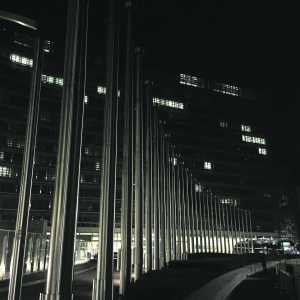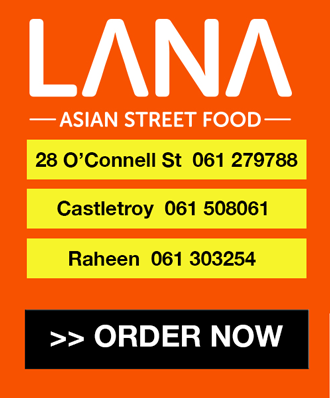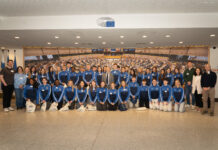
BRUSSELS – a bustling Belgian beauty replete with history but better known of Europe nowadays for its bureaucrats and big business. It is one of the powerhouses that has more of an effect on us than we care to realise.
Andrew Carey reports from the Belgian capital.

A recent barometer assessing citizens awareness and perceptions of EU regional policy found that, in Ireland, 75 per cent of people were not aware of any EU co-financed projects to improve their own area. The figure was higher than the EU average of 64 per cent. However, more than nine out of ten people who new about EU regional funding in their area said it had a positive effect. So why do so many seem to be unaware of what Europe does for us?
This was a question that the organisers of the recent session of EU OPEN Days in Brussels tried to answer. Hosting more than 6,000 people to a city-wide event is certainly not the easiest of tasks. From key stakeholders, regional policy decision makers, journalists and local authority personnel, the OPEN Days 2015 aims to assist to make the link between Brussels and the region and the issues that the effect its citizens.
The European Commissioner for Regional Policy Corina Cretu said: “Every year the OPEN DAYS bring together all those involved in the implementation of Cohesion Policy, providing a great opportunity for networking and sharing best practices. This year, the exchanges will very much focus on how EU funds can best contribute to delivering on the European goals of growth and jobs”.
The 2014 – 2020 Smart EU Cohesion policy funds of €350 billion will follow three main themes; • Modernising Europe: The regions in the Energy Union and the single digital market; • Regions open for business: Development of SMEs, innovation and job creation; • Places and spaces: Urban and rural development, urban-rural integration.

In Ireland, the EU will invest €1.19 billion as part of the Cohesion Policy funding allowing the management of three operational programmes – two European Regional Development Fund (ERDF) programmes and one European Social Fund (ESF) programme. €951.6 million will be spent on various ERDF projects; €168.8 million will be used for European Territorial Cooperation while €68.1 million has been allocated to the Youth Unemployment Initiative.
The priorities are to combat youth unemployment; address social exclusion; promote research and development in the business sector; promote an environmentally friendly and resource efficient economy and support the shift towards a low-carbon economy.
Achievements so far
But what has been achieved since the implementation of the 2007-2013 raft of funding?
A €901 million investment led to the creation of 4,500 jobs ( more than 900 of them in research) and provided extended access to broadband in rural areas bringing 150,000 new users on the grid and support to over 7,000 small to medium enterprises.
The ERDF also enabled the Institutes of Technology play a key role in developing technologies to deliver maximum industrial impact. In Limerick, it has meant that funding has been provided to start up enterprises at the Limerick Institute of Technology where they can be supported to reach their full potential. ESF funding helped tackle the issues of youth and long-term unemployment as well as addressing the needs of those threatened by poverty and social exclusion.
What does the EU mean to you?
Regardless of where you live, the European Union not only affects your life, but may also transform it. By learning how Europe works, you may even discover new jobs you never heard of. The European Union has a large, yet often unnoticed, impact on many aspects of everyday life. While the EU is often depicted as a monstrous bureaucratic creation, over the past 50 years it has accomplished what other multinational organizations took centuries to realise. It remains the most accomplished experiment of economic, social and political integration in human history.
What makes up the EU?
The European Parliament – The voice of the people Directly elected legislative arm of the EU there are 751 Members of the European Parliament that sits in Strasbourg, Brussels and Luxembourg. Members of the European Parliament (MEPs) are directly elected by EU citizens to represent their interests.
Elections are held every five years and all EU citizens over 18 years old (16 in Austria) – some 380 million – are entitled to vote. The Parliament has 751 MEPs from all 28 Member States. The official seat of the European Parliament is in Strasbourg (France), although the institution has three places of work: Strasbourg, Brussels (Belgium) and Luxembourg.
The main meetings of the whole Parliament, known as ‘plenary sessions’, take place in Strasbourg 12 times per year. Additional plenary sessions are held in Brussels. Committee meetings are also held in Brussels. Composition of the European Parliament The seats in the European Parliament are allocated among the Member States on the basis of their share of the EU population.
Most MEPs are associated with a national political party in their home country. In the European Parliament the national parties group into EU-wide political groupings and most MEPs belong to one of these.
What the Parliament does?
The Parliament has three main roles:
1. It shares with the Council the power to legislate – to pass laws. The fact that it is a directly elected body helps guarantee the democratic legitimacy of European law.
2. It exercises democratic supervision over all EU institutions, and in particular the Commission. It has the power to approve or reject the nomination of the President of the Commission and Commissioners, and the right to censure the Commission as a whole.
3. It shares authority with the Council over the EU budget and can therefore influence EU spending. At the end of the budget procedure, it adopts or rejects the budget in its entirety.
The committee of the regions
The Committee of the Regions is the voice of regions and cities in the European Union. It has 350 regional and locally elected representatives from the 28 EU countries.
Its six commissions covers the following policy areas:
*Employment, vocational training, economic and social cohesion, social policy, health.
*Education and culture.
*Environment, climate change, energy.
*Transport and trans-European networks.
*Civil protection and services of general interests.
Six plenary sessions are held each year resulting in more than 50 opinions a year on EU legislation. There are at least 40 stakeholders’ consultations and 300 individual events each year.
The Commission and its priorities

Background
At the core of the EU are the Member States – the 28 states that belong to the Union – and their citizens. The unique feature of the EU is that, although these are all sovereign, independent states, they have pooled some of their ‘sovereignty’ in order to gain strength and the benefits of size.
Pooling sovereignty means, in practice, that the Member States delegate some of their decision-making powers to the shared institutions they have created, so that decisions on specific matters of joint interest can be made democratically at European level.
The EU has achieved much since it was created in 1950. It has built a single market for goods and services that spans 28 Member States with over 500 million citizens free to move and settle where they wish. It created the single currency which is now a major world currency and which makes the single market more efficient. It is also the largest supplier of development and humanitarian aid programmes in the world.
Looking ahead
The EU is working to get Europe out of the economic crisis. It is at the forefront of the fight against climate change and its consequences; it helps neighbouring countries and continues ongoing negotiations on enlargements; and it is building a common foreign policy which will do much to extend European values around the world.
The success of these ambitions depends on the ability to take effective and timely decisions and to implement them well.
Who makes the decisions?
Decision-making at EU level involves various European institutions, in particular:
* the European Parliament, which represents the EU’s citizens and is directly elected by them;
* the European Council, which consists of the Heads of State or Government of the EU Member States;
* the Council, which represents the governments of the EU Member States;
* the European Commission, which represents the interests of the EU as a whole.
The European Council defines the general political direction and priorities of the EU but it does not exercise legislative functions. Generally, it is the European Commission that proposes new laws and it is the European Parliament and Council that adopt them. The Member States and the Commission then implement them.
The European Council
The European Council brings together the EU’s top political leaders, i.e. Prime Ministers and Presidents along with its President and the President of the Commission. They meet at least four times a year to give the EU as a whole general political direction and priorities.
The High Representative of the Union for Foreign Affairs and Security Policy also takes part in the work of the European Council. As a summit meeting of the Heads of State or Government of all the EU Member States, the European Council represents the highest level of political cooperation between the Member States.
The leaders decide by consensus on the overall direction and priorities of the Union, and provide the necessary impetus for its development. The European Council does not adopt legislation. At the end of each meeting, it issues ‘conclusions’, which reflect the main messages resulting from the discussions and take stock of the decisions taken, also as regards their follow-up.
These conclusions identify major issues to be dealt with by the Council, i.e. the meetings of ministers. They may also invite the European Commission to come forward with proposals addressing a particular challenge or opportunity facing the Union. European Council meetings take place at least twice every six months.
Additional meetings may be called to address urgent issues in need of decisions at the highest level, for example in economic affairs or foreign policy.
Opening remarks of the EU OPEN Days
Markku Markkula – President of the European Committee of the Regions said that “EU regional policy is linked to the needs of the regions – the key is the results and the direction to getting these results is based on the very needs and the evolution of those on the ground.
“Each time the EU is confronted by serious challenges – from the economic crisis to the unprecedented flow of refugees seen in recent months – structural funds are identified as a crucial tool in shaping the EU’s response to shared problems” said President Markkula, adding that: “Making cohesion policy work needs the knowledge of local administrators, experts, academics and politicians who are committed every day to implement and improve it.
“This wealth of experience will be shared at the Open Days where we make a plea for a smarter, effective and simpler cohesion policy.” Michael Schneider, the president of the European People’s Party Group said that
“The EU is in crisis mode since 2008 – . It’s essential to understand how necessary cohesion funds are.” He added that the “administrative burden needs to be tackled as does “simplification” for our civil servants who don’t need to be cluttered by filling out forms – they need some clear headspace for innovative thinking and development.”
During the sessions, political representatives in the EU asked the Commission to remember the rural areas of the regions and their needs for assistance.
European representatives noted that “budgetary cuts in the last cohesion policy period affected the capacity of cites and regions to co fund and therefore spending priorities changed to react on the financial crisis. Mr Schnieder went on the say that “from the theoretical perspective the average speed of cohesion policy over the six to seven years could be considered to be satisfactory, but what we are seeing through our feedback from members we see that there are still many difficulties.
“We have to look at the instructions given by the member states as to what their needs are.
“We have seen differences between the states and the practices, but the Committee of the Regions is going to be a very important participant in addressing change.
As part of the EU OPEN Days sessions, visits to see a number of EU co-funded projects in Brussels were arranged and it included the revitalisation of an historic abattoir on the outskirts of inner Brussels. The huge Brussels Abattoir Market Hall was built on the site of the ancient livestock market.
The animals were transported to and from the market by train. Its location in Cureghem was chosen because of its proximity to the canal and Brussels-West railway station. Today it is the last visible part of a complex which includes the last surviving city-centre abattoir in Europe, in continuous use since 1890 and now surrounded by many other businesses.
However, following investment and assistance from the ERDF, each weekend, a large market is still held there but the space has now expanded to become a venue for much more.
Redevelopment plans include the addition of a roof-top market garden, restaurant and multi-tier office space while the modern abattoir remains on site as part of the growing business interests. www.abattoir.be










